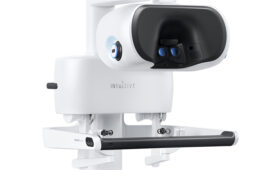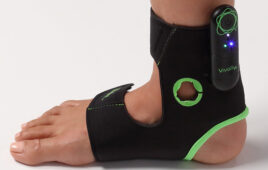
[Photo by Phalinn Ooi via Flickr under Creative Commons license.]
Applying a user-centered approach to your product design process will enable you to create products that resonate with your target market – and are safe, effective and easy to use.
No matter where you are in a product’s lifecycle both user research and user evaluations are an invaluable aspect of product design. However, these activities can be daunting.
Nevertheless, application of a user-centered design process can be broken into four simple steps.
(See Product Creatio Studio founder Scott Theilman at DeviceTalks West, Dec. 11–12 in Orange County, Calif.)
Step 1: Discover key product information through user research.
The goal of user research is to discover and document key information about the product’s
users, how they will engage with the product and the environment in which they will experience
it. These findings will inform decisions throughout the product design process.
There are many user research methods, but two of the most common techniques are:
- Field studies – observe users in the environment in which the product is intended to be
experienced. - User interviews – question/answer sessions with the users to gain insight into their
experience, problems, and expectations of the product.
At the end of this phase, a detailed report is given to the product team that communicates the
researcher’s findings and recommendations based on the user’s needs.
Overall, the goal of user research is to inform future work from the perspective of the end user,
and validate decisions.
Step 2: Translate your insights into product design.
After a good understanding of the user is established, that information can be used to generate
a robust set of user and product requirements for the design team.
For example, a user requirement may specify that the product is used both indoors and
outdoors. This leads to product requirements specifying the necessary level of protection from
the elements.
The design team then uses those requirements to guide the product design, ensuring that the
design concepts account for potential exposure to rain, dirt and extreme temperatures that a
the product might be exposed to outside.
Without such insights included in the design process early on, the product could result in lost
revenue from the company due to returns, malfunctions or consumers flat out not buying
because the product was not created in a way they wanted to use it.
Typically, multiple design concepts are developed based on both user and product
requirements, with various pros and cons associated with the each approach.
Step 3: Evaluate design concepts through user testing.
Once you have initial design concepts, it is time to evaluate those concepts with the end users.
Evaluation allows the research team to identify the potential “best solutions” from a larger set of
solutions and enable further refinement of the design concepts.
Design feedback and evaluations can be based on storyboards, sketches, physical prototypes
or functional prototypes that are presented to the user who provides feedback based on their
interaction with the concept.
The results from the user evaluations are used as objective data (based on facts rather than
biased opinion or individual interpretation) to inform design decisions from a user-centered
perspective, ensuring that the end product will enable users to accomplish their goals.
Step 4: Repeat design and user evaluations for even more powerful insight.
While even a single round of user evaluation provides valuable information for the design team,
product development is an iterative process.
Armed with new insights from a user evaluation, the design team can refine the design concepts
and produce new prototypes, with higher fidelity and more functionality, which in turn can be
used to obtain more detailed and complete user feedback.
You can iterate through product design and user evaluations as needed until you reach a final
product. You can even conduct user evaluations on released products to validate marketing
claims and/or identify new user needs to be incorporated into the next generation product.
Following a user-centered design process will give you confidence that the end product will help
your users accomplish their goals and provide a satisfying experience, resulting in widespread
adoption of your product.
Chrissy Glaister is lead usability engineer at Product Creation Studio.




